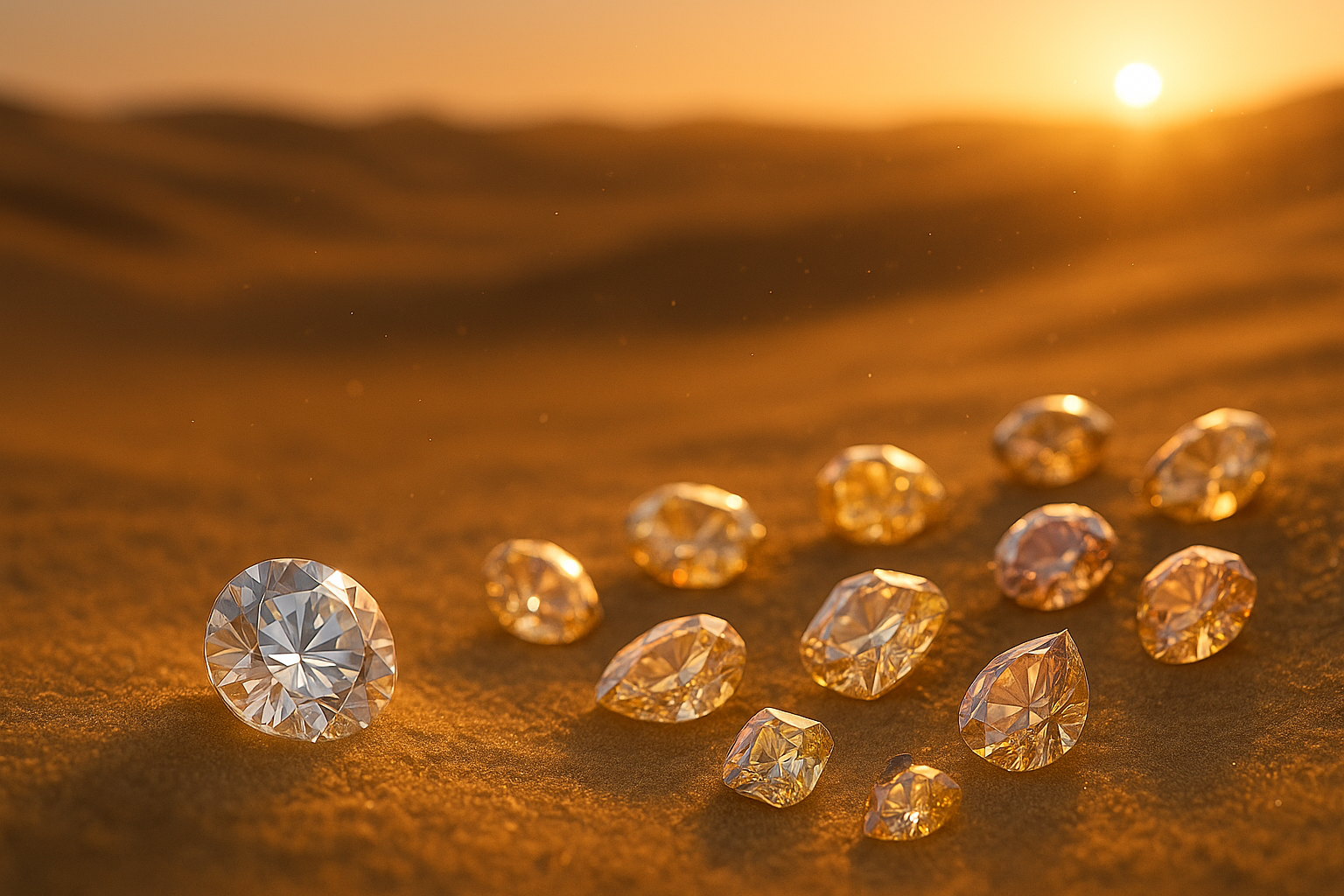If you’ve seen the recent ads for Ombré Desert Diamonds—with their warm champagne tones and poetic stories about African sands—you might think you’re discovering a new, rare kind of natural diamond.
You’re not.
What you’re seeing is one of the most strategic marketing pivots in the diamond industry in years—not to showcase a new find, but to move a massive stockpile of undesirable stones. At Diamond Cutters International, we’re pulling back the curtain.
What Are “Ombré Desert Diamonds”?
De Beers unveiled this campaign in 2025 to promote diamonds in shades of cream, yellow, and brown. The goal? Tie them to a romantic desert narrative and create visual separation from the colorless flood of lab-grown diamonds hitting the market.
But this isn’t about rarity. It’s about repositioning.
The Real Story Behind the Marketing
A $2 Billion Backlog
De Beers is currently sitting on its largest stockpile since 2008, much of it consisting of lower-color rough diamonds—including brown goods. They aren’t launching a category; they’re liquidating an inventory problem.
A Failed Lab-Grown Gamble
De Beers’ Lightbox venture in lab-grown diamonds failed to gain traction. As lab-grown prices crashed, the “budget” lane in diamond sales disappeared. So, De Beers pivoted again—this time toward natural stones that lab-grown producers can’t easily replicate: brown ones.
Dressing Up for a Sale
Parent company Anglo American is preparing to spin off De Beers by 2026. Clearing old inventory and pushing a new narrative boosts the balance sheet and helps position the brand for sale.
Why DCI Won’t Sell Brown Diamonds
At Diamond Cutters International, we don’t chase trends—we protect your investment. Here’s why we refuse to carry brown diamonds, no matter the marketing spin.
-
No Secondary Market
Brown diamonds do not appear on the Rapaport Price List, the global standard for diamond pricing. That means there’s no reliable resale value. Estate buyers and pawnshops treat them like decorative stones, not heirlooms. -
Better Alternatives Exist
For the same budget, clients can own a stunning G or H color diamond—or a truly rare fancy color stone. Why settle for something that was sitting in a vault for years? -
Storytelling Doesn’t Equal Scarcity
We love great stories. But stories don’t make stones rare—supply and demand do. Brown diamonds are abundant. That hasn’t changed, no matter what name you give them.
How the Marketing Holds Up to C.O.P.P.E.R.
We developed the C.O.P.P.E.R. framework to help consumers understand the difference between real value and marketing fluff. Let’s apply it:
- Chemically – Brown diamonds are natural, but chemically identical to other low-color diamonds.
- Optically – Their warm tones come at the cost of brilliance and light performance.
- Physically – Structurally the same, but with tints that reduce market value.
- Phosphorescence – Not relevant to brown stones.
- Enhancements – These stones typically aren’t enhanced—because improving the color isn’t worth the cost.
- Real – Yes, they’re real. But real doesn’t mean rare or investment-worthy.
What This Means for Buyers
If you love the look and are treating it as a fashion piece—not an investment—there’s nothing wrong with brown diamonds. Just go in with your eyes open.
But if you’re building a collection, protecting wealth, or looking for long-term value, brown diamonds offer little return and limited resale flexibility.
Bottom Line: Shine Fades. Value Shouldn’t.
De Beers isn’t starting a revolution—they’re trying to repackage yesterday’s inventory for today’s buyer. At DCI, we won’t sell you a stone we wouldn’t buy ourselves. If you’re looking for brilliance, scarcity, and timeless value, we’re here to help you find the diamond that truly deserves your name.
